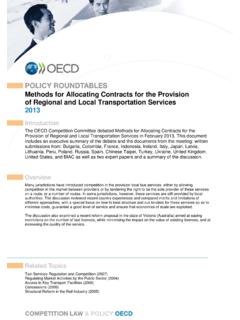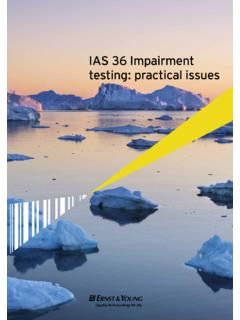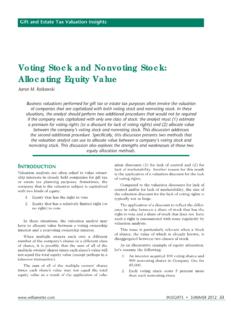Transcription of The Community Empowerment (Scotland) Act
1 September 2015 SCDC briefing no. 2/15 The Community Empowerment (Scotland) Act 1 Contents About this briefing .. 2 Overview .. 3 Introducing the Act .. 4 National Outcomes .. 5 Community planning .. 6 Participation requests .. 9 Taking over assets .. 12 Extension of Community Right to Buy .. 12 Abandoned, neglected or detrimental land .. 13 Asset transfer requests .. 13 Common good property .. 15 Other provisions .. 16 Participation in Public Decision-Making .. 16 Allotments .. 16 Delegation of Forestry Commission Functions .. 16 Supporter Involvement in Football Clubs .. 16 What happens next? .. 17 What will SCDC do now? .. 17 Further information and other useful links.
2 18 2 About this briefing The Community Empowerment (Scotland) Act received Royal Assent on 24 July See the final version at: This SCDC briefing aims to explain the provisions of the Community Empowerment (Scotland) Act and to set out some of the implications and opportunities they have for Community development, Community organisations and Community planning. The briefing is primarily for those involved in Community development, whether as Community organisations, practitioners or public agencies. SCDC will publish further briefings over the coming months as the various provisions of the Act come into force, and will review in more detail the opportunities and challenges for all those involved.
3 The three major elements of the Act that communities should be aware of are: the strengthening of Community planning to give communities more of a say in how public services are to be planned and provided new rights enabling communities to identify needs and issues and request action to be taken on these, and the extension of the Community right to buy or otherwise have greater control over assets. Underpinning all these provisions is a welcome intention to focus attention on disadvantage and inequality. This bill is a momentous step in our drive to decentralise decisions and give people a stronger voice in their communities (Marco Biagi MSP, Minister for Local Government and Community Empowerment ) 1 3 Overview SCDC welcomes the Community Empowerment (Scotland) Act as a significant step towards communities having greater influence or control over things that matter to them.
4 In particular we welcome the emphasis on addressing disadvantage and inequality enshrined in the Act. The Act as a whole is highly ambitious and appears to commit government and public services to engage with, listen to and respond to communities, easing the way towards communities having greater influence over how land and buildings are managed and used. Its detailed provisions set out many opportunities for communities, offering consultation on programmes and priorities, involvement in local outcomes improvement processes, reporting on progress of various kinds and, importantly, making support available to communities. With careful consideration of the links between the Act and forthcoming supporting guidance and regulations, the principles underpinning the Public Bodies (Joint Working) (Scotland) Act 20142 and the recent regulations for Community learning and development3, there appear to be unprecedented opportunities to position Community participation more sustainably in a very wide range of local initiatives and plans.
5 Many communities will already be able to fully utilise the new provisions outlined in the Act but many others will need good quality information, advice and support to enable them to be confident in taking up new opportunities to influence decision making processes and priorities at local and national level. These processes include the development of Scotland s National Outcomes, the setting of Community planning priorities, the content and performance of local outcomes improvement plans and the smaller scale locality plans, land and asset transfer arrangements, the development of allotments and green spaces, and the use of common good resources. SCDC greatly welcomes the recognition in the Act that some communities will need public agencies to offer information, advice and support to enable them to make best use of the legislation.
6 We also welcome the requirement that such support is offered or provided by all Community planning agencies and not just local authorities. However, this does pose serious questions about whether and how public agencies will be able to respond. The increase in opportunities for communities to participate has to be matched by appropriate resourcing, hence the importance of the provisions that place duties on public bodies to develop and resource appropriate support arrangements. Ways will need to be found to address the serious shortfall in the capacity of public bodies and others to support Community Empowerment at local and national level. The Act will help communities develop their influence and mobilise assets towards more effectively focused local policies and priorities.
7 However, transformative change 2 3 4 depends crucially on addressing broader social and economic factors in Community life and prospects. The Act reflects government priorities in promoting social justice and combating inequality, and could help stimulate work to engage in wider education for democracy. In turn, this will help to create the conditions for citizens to make more informed judgements about big issues. In this sense the Act is not a substitute for other forms of social organisation, but potentially an exciting pathway towards democratic renewal, in addition to having an instrumental value in planning and delivering better services and outcomes.
8 The explicit references to inequality in the Act, and how it is to be defined and addressed, have the potential to encourage a real and meaningful discussion in local planning. Although silent on how equalities issues might affect resourcing, the Act opens up opportunities for dialogue about fairness and potential actions to tackle equality issues. Introducing the Act Each Part of the Act is set out separately below. There is a lot of fine detail to each provision that we have not gone into at this stage. However, as the provisions are put into practice we will issue further notes and guidance on particular themes, and for specific audiences. The Scottish Government has stated that, even though Royal assent has been granted, there is still a lot of work to be done to prepare the orders, regulations and guidance that will be needed to implement the legislation.
9 Different provisions of the Act will come into force at different times, but it is expected that most parts will be in place by the summer of 2016. As it is a piece of legislation, the Act is written in legal terms. Some of these terms are defined within the Act, while others are open to interpretation. In particular, terms such as reasonable grounds or good reason (not to) leave what is, or is not, reasonable open to interpretation, ultimately by the Courts. Where possible we have tried to explain these terms, but we have also recognised that some of these terms are deliberately open so they can work in different contexts. We have used inverted commas wherever language from the Act is quoted directly.
10 5 National Outcomes Building on the Scotland Performs framework,4 this first Part of the Act places a duty on the Scottish Government to develop, consult on and publish a set of national outcomes for Scotland. Every five years (at least), the Government must initiate a nationwide consultation to ask the people of Scotland what they want to see achieved. It is then up to the government to revise national outcomes accordingly, which must be monitored and reported on. When consulting on national outcomes, the government must consult persons who represent communities when determining and reviewing the national outcomes. This includes communities based on common interest, identity or geography.







